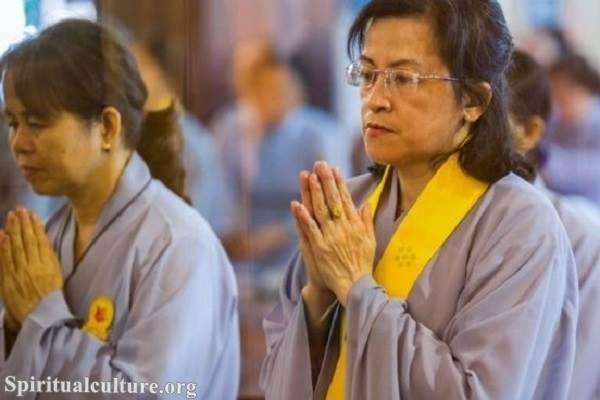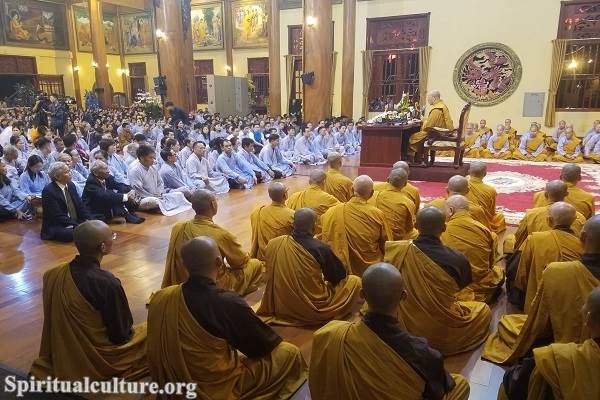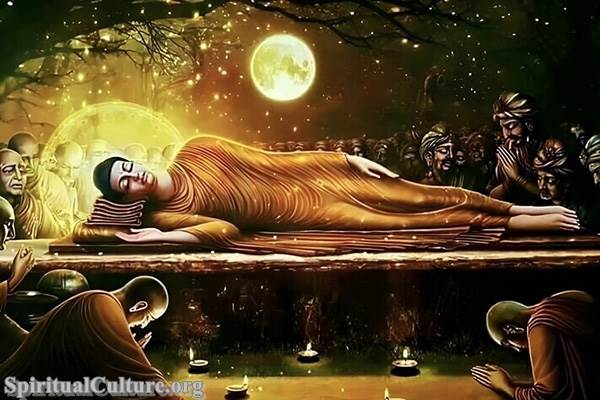In each of us echoes a timeless question: Who am I really? Beyond our names, achievements, and passing emotions, we sense there is a deeper truth. Buddhism offers a profound yet beautifully simple answer through the teaching of the five aggregates, or skandhas — five constantly shifting processes that together create the illusion of “I.”
As Spiritual Culture, we invite you into this gentle exploration. This article will unpack each aggregate clearly and warmly, weaving sacred wisdom with daily life so you can understand not just with the mind, but feel it in your heart.
The Five Aggregates: Seeing Beyond the Self
The Buddha taught that clinging to the idea of a permanent self is the root of suffering. Instead of a solid “me,” there is a collection of five aggregates working together:
- Form (Rūpa)
- Feeling (Vedanā)
- Perception (Saṃjñā)
- Mental formations (Saṃskāra)
- Consciousness (Vijñāna)
When we examine these deeply, we begin to dissolve our tight grip on identity and step toward freedom.
Form (Rūpa): Our Physical Existence
The Nature of Form
Form refers to the physical body and all material phenomena. It includes our five senses (sight, sound, smell, taste, touch) and their objects.
Embracing Impermanence
Our body constantly changes — aging, healing, aching, growing. Yet we often say, “This is me.” By recognizing form as a temporary aggregate, we soften our fear of aging and loss.
“This body is not mine, I am not this body, this body is not myself.”
(Anattalakkhana Sutta, SN 22.59)
Daily Reflection
Next time you feel tired or joyful in your body, pause. See it as a wave passing through form, not as the totality of you.
Feeling (Vedanā): The Flavor of Each Moment
What Are Feelings?
Feelings are the basic tones: pleasant, unpleasant, or neutral. They arise instantly before any thoughts or stories.
The Endless Chase
When we crave pleasant feelings or avoid unpleasant ones, we become trapped in a cycle of suffering. By simply noticing feelings without grasping, we create space.
Practicing Equanimity
Try saying inwardly: “This is a pleasant feeling,” or “This is unpleasant,” without adding, “I must hold on” or “I must push away.”
Perception (Saṃjñā): The Mind’s Labels
Recognizing Perception
Perception is the process of identifying and interpreting sensory information — seeing a shape and naming it “tree,” or hearing a tone and knowing it’s music.
Beyond Judgments
Our suffering often grows from judgments: “This is good,” “This is bad.” By seeing perception as an automatic labeling, we begin to let go of rigid views.
Simple Exercise
When you label something today — “delicious,” “annoying” — pause. Notice how quickly your mind organizes reality and how freeing it is to hold labels lightly.
Mental Formations (Saṃskāra): The Weather of the Mind
What Are Mental Formations?
This aggregate includes thoughts, intentions, desires, emotions, and all our mental habits. These shape our actions and karma.
Seeds We Water
We carry seeds of anger, love, jealousy, compassion. Depending on which we water, our future unfolds accordingly.
“With our thoughts we make the world.”
(Dhammapada, Verse 1)
Cultivating Wholesome Patterns
Become aware of the mental formations arising in you. Ask: “Is this thought leading me toward peace or suffering?” Then gently guide your mind.
Consciousness (Vijñāna): The Knowing Stream
What Is Consciousness?
Consciousness is the ongoing flow of awareness — it “knows” all the other aggregates. It arises with each sense experience and mental event.
No Solid Observer
We often feel consciousness is a fixed observer inside, but it too is impermanent, shifting moment by moment.
Resting in Spacious Awareness
Imagine consciousness as a vast, clear sky. Thoughts and sensations come and go like clouds — none can stain the open sky.
How the Aggregates Create “Me”
The Illusion of Unity
Just as a car is a sum of parts — wheels, engine, seats — “self” is a sum of aggregates. We mistake the collection for a solid “I.”
“Assembling parts, we say ‘chariot’; assembling aggregates, we say ‘being’.”
(Milindapañha)
From Clinging to Freedom
By understanding this, we reduce attachment, fear, and defensiveness. We move from “I am my success” or “I am my pain” to “This is a temporary process arising and passing.”
Applying the Five Aggregates in Daily Life
In Relationships
Arguments often come from clinging to perceptions or feelings. Seeing them as aggregates allows us to forgive and listen more deeply.
In Work and Success
When praised or criticized, remember: feelings and perceptions are fleeting. Do not let them define your worth.
With Aging and Illness
When health changes, see it as a transformation in form. When emotions arise, greet them as visitors, not as your true identity.
In Solitude
Notice mental formations: self-criticism, longing, hope. Hold them lightly, seeing them as passing clouds in consciousness.
The Five Aggregates and Modern Society
Social Media and Self-Image
Likes and comments amplify our attachment to form and perception. Mindfulness of aggregates helps us engage with these platforms without losing ourselves.
Consumerism
Advertisements target feelings and mental formations, urging us to “be someone” through products. Recognizing aggregates shields us from manipulation.
Political and Social Divisions
Rigid identities are built on perceptions and mental formations. Understanding aggregates fosters openness and compassion across divides.
The Aggregates in Sacred Texts
The Heart Sutra
“Form is emptiness; emptiness is form.”
All aggregates are empty of an inherent self. Yet they manifest beautifully and vividly — this is not nihilism but liberation.
The Satipatthana Sutta
Buddha invites us to observe body, feelings, mind, and mental objects — a direct practice of seeing aggregates in real time.
Metaphors to Deepen Understanding
The River
Like a river constantly flowing, we cannot step into the same “self” twice. Our aggregates shift every moment.
The Banana Tree
Peel away each layer — body, feelings, thoughts — and no solid core remains.
The Theater
Aggregates are like actors on a stage; the self is merely the story we weave from their performance.
Experiencing Rather Than Just Knowing
Reading and intellectual understanding are only the first step. True freedom comes from experiential insight.
Practical Contemplation
- Sit quietly.
- Notice the body (form).
- Sense the feeling tone (pleasant, unpleasant, neutral).
- Observe perceptions (what you label).
- Watch mental formations (thoughts, urges).
- Rest in consciousness (awareness itself).
Gently notice the impermanence and non-ownership of each.
Reflect and Reimagine
The teaching of the five aggregates (skandhas) is a gentle, compassionate invitation to see through the illusion of a fixed self. By recognizing these five ever-changing processes, we begin to loosen our deep fears and insecurities. We learn to meet each moment with tenderness, to forgive more easily, and to love more deeply.
As Spiritual Culture, we encourage you to explore this teaching not just as a concept but as a living practice. Notice when you say “I am angry” — can you instead see it as “Anger is arising”? Feel when you say “I am unworthy” — can you sense it as a fleeting mental formation rather than your essence?
May this understanding liberate your heart, soften your judgments, and guide you toward a spacious, radiant, and compassionate life.




